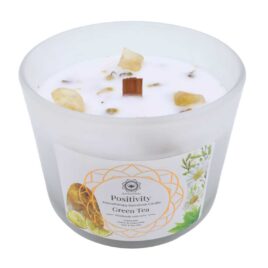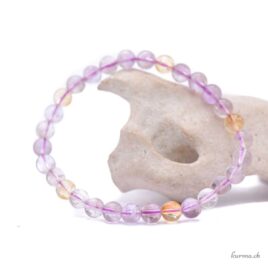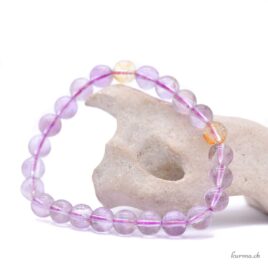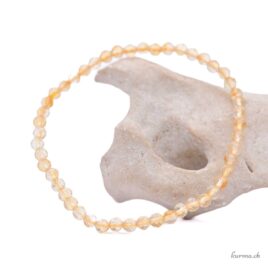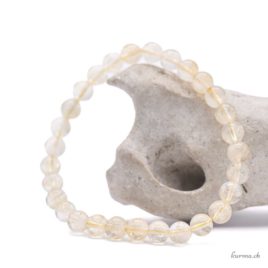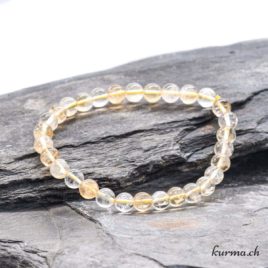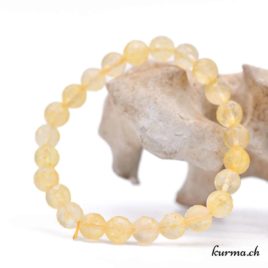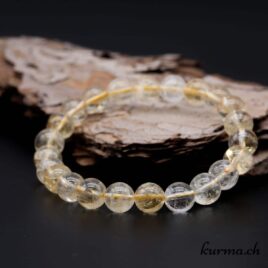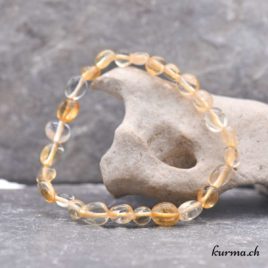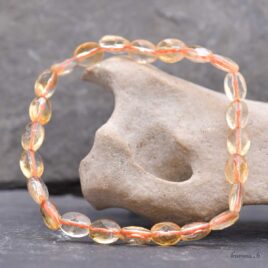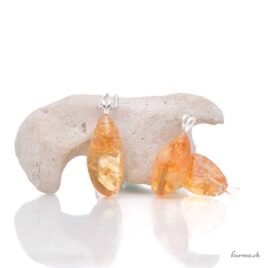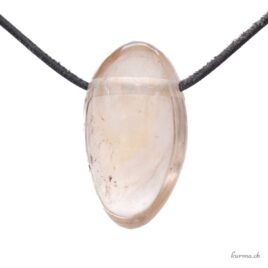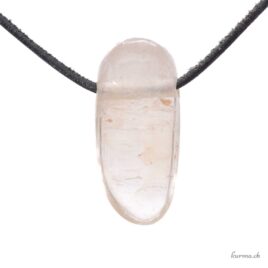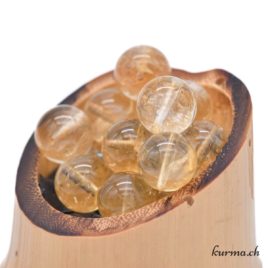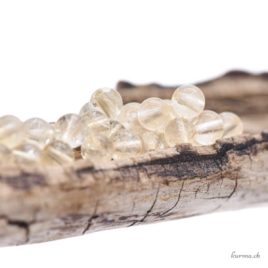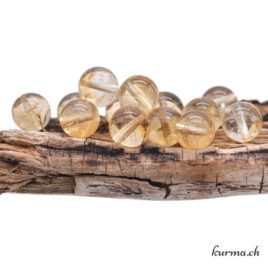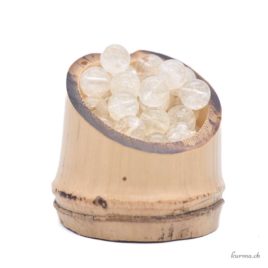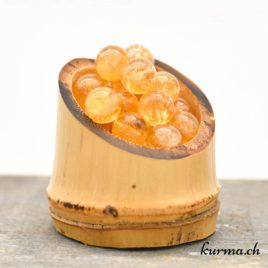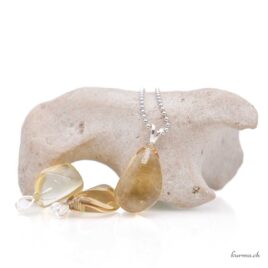Citrine
New vitality: Citrine is a fine, warm and joyful stone in lithotherapy. This crystalline quartz, reputed to bring good luck,
invites you to dare to open your doors to success and prosperity.
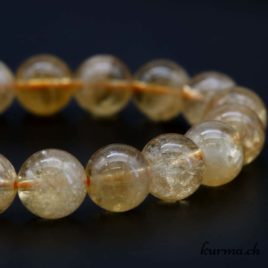
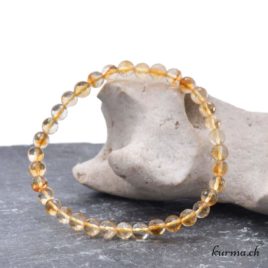
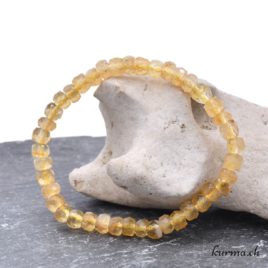
What are the benefits, virtues and properties of Citrine in lithotherapy?
What is the significance of Citrine?
South American shamans explain that Citrine burns away man's limits and gives him new vitality, both physically and psychologically.
What are the "magical properties" of natural citrine?
Citrine releases warm energy, inviting you to shine like the sun. With it, you dare to assert your qualities and your personality. Your self-confidence grows and your joy awakens.
It's a positive companion that invites you to be outgoing, to live joyful, convivial moments; to experience new things and to look at the reality of your life with envy and optimism.
With her, hibernating bears are out of the question!
By helping you to free yourself from the limits and patterns that constrain you, by bringing you a new life force colored by dynamism and vitality, Citrine invites you to open the doors to prosperity and success.
Its Yang energy accentuates your determination and courage. It pushes you into action to finally initiate the changes you need. It's about putting luck on your side and achieving abundance.
Physically, Citrine can help with diabetes, stimulate digestion, increase libido and reduce sensitivity to cold.
What are the benefits of "Heated Citrine" or "Heated Amethyst"?
Heated Citrine is the most common commercially available "Citrine". It is a heated amethyst. It has all the lithotherapeutic virtues of natural Citrine, but as it has taken on this color through an accelerated artificial process, its effects are rapid and short-lived. It's like drinking an energy drink rather than getting enough sleep; the short-term effects will be there, but it's better to eat well, sleep and exercise regularly.
That's not to say that "heated citrine" is of no interest - it can be very useful at certain times, especially if you want fast and effective action, but it won't bring about genuine, in-depth change.
In fact, it responds perfectly well to the demands of the society in which we live: to be efficient, active, fast, cheerful and enterprising, at all times and in all circumstances.
Frequently asked questions about Citrine
Why wear Citrine?
To carry with you a solar, luminous and positive energy that gives you confidence in yourself and in life, that invites luck and abundance and that helps you to move forward with joy.
How to work with Citrine and how to use it?
- Wear a Citrine on your body to enjoy its daily benefits
- do a visualization, relaxation or meditation session with a Citrine on your solar plexus to harmonize the energies of the 3ᵉ chakra
- place a Citrine on your belly to facilitate and stimulate digestion, especially if you suffer from very slow digestion.
- if you use Citrine to help you heal from depression, you can combine it with Malachite to help you free yourself from sadness.
Where to place a Citrine?
- Using Citrine in your home is like welcoming the sun's rays on a sunny morning. It radiates joie de vivre and vitality and
- place it in your kitchen, on your dining table, in your living room or any space where you want to spend convivial moments
- in your workshop or workplace to increase your stamina and determination
- Citrine in the purse is said to attract wealth!
How do I know if Citrine is right for me?
If you feel the need for light, for warmth, for an energy that pushes you forward in a positive way, if you need to gain self-confidence... then Citrine can be a precious ally. In general:
- It's perfect for shy, introverted people who lack self-confidence. For such difficulties, I recommend combining it with Aventurine (whose virtues help overcome fear); the two together work wonders!
- for people who are depressed, very negative or convalescing
- for those who think they're out of luck
- for shopkeepers, businessmen and women, entrepreneurs and anyone who wants to "succeed in life".
Which crystals amplify the virtues of Citrine in lithotherapy?
- Combined with Aventurine, for enhanced leadership
- combined with Carnelian, for vital motivation
- with Red Jasper, to avoid giving up in the face of difficulties and to give oneself courage.
Which stones should Citrine not be associated with?
There is no contraindication to using Citrine. As everything depends on individual sensitivity, I encourage you to experiment and listen to your own feelings by testing different stone combinations.
When should Citrine be purified? Can Citrine be placed in water or in the sun? Where can I put Citrine to recharge it?
There's no rule about how often you should cleanse your Citrine, it all depends on the energies it absorbs on a daily basis. In other words, if you feel like purifying your Citrine, now's the time. But it's always a good idea to purify a Citrine (like most other stones) before and after a treatment.
Citrine can be used in water and is best recharged in the sun.
How to clean and purify a Citrine?
Sun, running water, waveform, fumigation, singing bowl, breath/wind, prayers...Which chakra for Citrine?
3ᵉ chakra - Solar plexusAstrological signs
Leo, Virgo, Gemini, Scorpio and LibraElement
LightCitrine mineralogy
Natural Citrine is a variety of crystalline Quartz of the oxide class, consisting of silicon dioxide, with traces of aluminum, iron, calcium, magnesium, lithium, sodium and hydrogen.
This semi-precious stone is mainly formed hydrothermally and has the particularity of developing its color in two different ways: when its color is golden yellow, it's iron that comes into play at temperatures above 300°C, and when its color is lemon yellow, it's aluminum ionized under the influence of weak radioactivity that gives it this hue. Natural citrine can also be brownish yellow.
Unlike other Quartz varieties, natural Citrine is rare. The term "Citrine" is also used to designate artificially heated Amethyst (which is the case for most Citrines on the market). This simple process has been in common use for a long time. Simply heat an amethyst for several hours at between and 450° to give it the appearance of citrine.
How to recognize a real Citrine?
The color of the gemstone can be a clue: natural citrine is pastel yellow, lemon yellow, sometimes smoky yellow to brown, but never orange, orange-yellow or orange-brown.
Natural Citrine has the same crystalline system as Rock Crystal and forms 6-sided prismatic crystals. So, if your Citrine doesn't have this crystalline form, it's a clue, but if it's an irradiated and heated Rock Crystal, only mineralogical tests will tell you.
Natural Citrine is not found in crystal meadows. If you have a citrine geode, it is a heated amethyst.
There's a very fashionable variety of Quartz with a very bright, almost fluorescent yellow color. It's called Lemon Quartz. Don't confuse it with natural Citrine, as it is artificially irradiated and heated.
What is the history of Citrine?
Its name comes from the Latin citrus citron, because of its color. In the Middle Ages, the name Citrine referred to many different yellow minerals - until 1546, when it was officially attributed to this yellow Quartz.
Citrine's history is difficult to trace, as it is often confused with topaz and yellow beryl.
What's certain is that all three have been frequently associated with luck and abundance. In ancient Greece, it was linked to Demeter, goddess of agriculture and the harvest and in ancient Egypt to Sekhmet, the powerful solar goddess with the body of a woman and the head of a lion.
In the 20ᵉ century and particularly between the wars, it became very fashionable in jewelry in bourgeois circles. People liked to pretend they were wearing Topaz and it was often nicknamed "Madeira Topaz". At the time, it was its orange-yellow and Madeira-yellow colors that were most appreciated (of course, these were heated Amethysts).
This stone has always been associated with solar energies and has a reputation for bringing good luck and attracting wealth.
Lithotherapy
- Element(s) :
- Zodiac(s) :
- Libra, Gemini, Leo, Scorpio, Virgo
- Purification :
- Singing bowl, Water, Fumigation, Form waves, Sun, Breath
- Illness(es) :
- Diabetes
- Physics :
- Digestive system
- Emotional :
- Action, Confidence, Courage, Endurance, Enthusiasm, Joie de vivre, Perseverance, Balance
- Spiritual :
- Harmony, Meditation, Meaning of life
- Disorder(s):
- Depression
- Miscellaneous :
- Abundance, Chance, Convalescence, Libido, Prosperity, Relationship (friendship), Relationship (love), Relationship (family), Sexuality
Mineralogy
- Hardness :
- 7.0
- Moths scale:
- 7
- Strunz classification :
- Silicate
- Crystalline system :
- Trigonal
- Chemical element :
- Si, O
- Line color :
- White
- Density :
- 2.63-2.65
- Cleavage :
- Imperfect (parallel to rhombohedral surface)
- Fracture:
- Conchoidal
- Transparency :
- Transparent
- Refringence :
- 1,544 - 1,553
- Pleochroism :
- Low (yellow, light yellow)
- Colors :
- Pastel yellow, lemon yellow, sometimes smoky yellow tending to brown
For self-confidence
*Please note! Some minerals may be toxic and must not be licked or ingested (as such or in the form of powder, elixir or stone water) or be in prolonged contact with the skin or mucous membranes.
*The information on the stones described here are general indications based on our research and experience, and are not exhaustive.
Reproduction in whole or in part of this content is prohibited. More info

